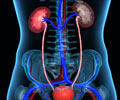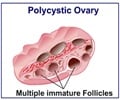- More Information on Dermoid cyst - (https://en.wikipedia.org/wiki/dermoid_cyst)
- About Dermoid cyst - (http://www.dermnetnz.org/lesions/dermoid-cyst.html)
- Dermoid Cyst in Children - (http://www.stanfordchildrens.org/en/topic/default?id=dermoid-cyst-90-p02032)
- Ovarian cysts - (http://www.mayoclinic.org/diseases-conditions/ovarian-cysts/basics/symptoms/con-20019937)
What is Dermoid Cyst?
A dermoid cyst is a sac-like growth that is formed in or on the skin. The growth is present at birth and usually occurs on the face near the eyebrow, beneath the skull, on the lower back scalp or on the chest over the collarbone, and in the ovaries. These cysts may contain fluid, pus that is identical to that found in a pimple.
These cysts have a slow rate of growth and have to be ruptured for tenderness. Facial dermoid cysts which are superficial can be removed without complications. However, rarer dermoid cysts need special techniques and training.
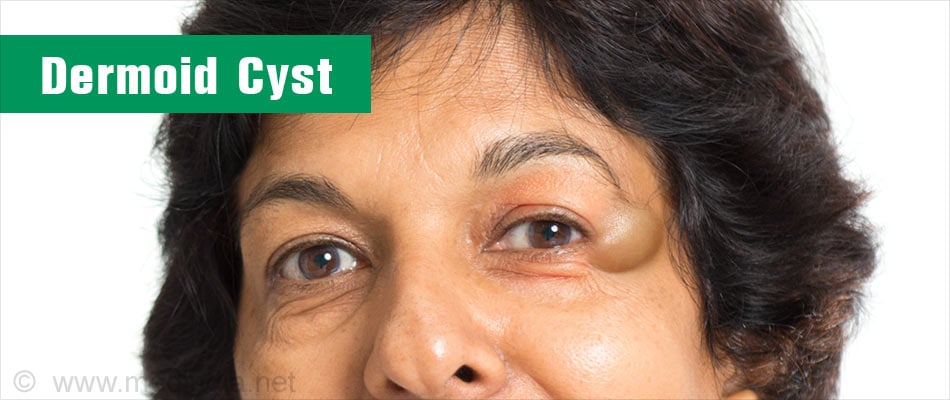
In some cases, dermoid cysts extend below the skin and may even penetrate the bone. They are found very rarely inside the body. Dermoid cysts get bigger with time and may become infected and therefore must be removed as they do not go away on their own.
What are the Causes of Dermoid Cyst?
This sac-like structure results during fetal development when skin and skin structures get trapped. Their cell walls are almost similar to that of the outer skin and multiple skin structures like hair follicles, sweat glands, teeth, hair or even nerves may be present.
In the case of ovarian dermoid cysts, it usually develops from a totipotential germ cell that is retained within the egg sac (ovary). As the cell is totipotential, it can give rise to all cell orders so as to form mature tissues and recognizable structures like hair, bone, oily (sebaceous) material, neural tissue and teeth.
What are the Symptoms & Signs of Dermoid Cyst?
There are no symptoms. But, in some cases symptoms may vary in intensity. Common symptoms include:
- Painless lump over the midline of the neck, face or hands
- Skin colored lump, or may have a yellowish tinge
In case of abdominal or ovarian dermoid cyst:
- Pain in abdomen, pelvic or lower back pain
- Difficulty urinating and urine retention
- Menstrual pain, which is worse than normal
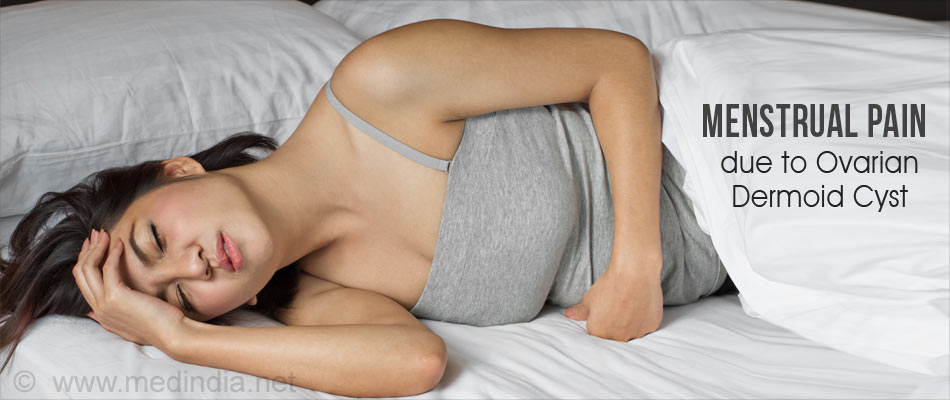
- Unexplained weight gain
- Abnormal vaginal bleeding
- Nausea, may or may not have vomiting
- Pain in sexual intercourse
In quite a few cases, the condition is serious and may require immediate attention. If dermoid cysts get infected, they can hurt, swell and become red or burst. Infected cysts can also cause fever.
How do you Diagnose Dermoid Cyst?
Initial diagnosis for checking of dermoid cysts is:
- Physical Examination
- Medical History
Tests to determine if cysts are attached to tissues in head and neck include:
- X-ray: Shows the images of the face, head, neck or other areas where the cyst is located.
- CT Scan (Computed tomography scan)
- MRI (Magnetic resonance imaging)
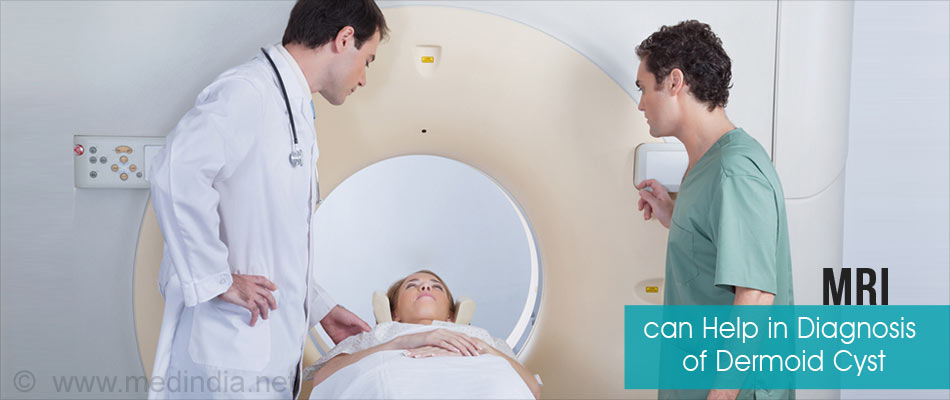
How do you Treat Dermoid Cyst?
Dermoid cysts are treated by their complete surgical removal at once and no spillage of cyst contents.
In case of children, dermoid cysts treatment is specific and depends on:
- Child's age
- Overall health
- Medical history
- Extent of condition
- Tolerability of child with regards to specific medications, procedures, or therapies
- Course of the condition
- Opinion or preference of parents
In cases of dermoid cysts in the ovaries, treatment depends on:
- Age
- Type and size of cyst
- Symptoms
Your doctor may further suggest following:
- Waiting may be needed to re-examine if cyst goes away on its own in few months’ time, irrespective of age.
- Birth control pills may be recommended to reduce the chance of occurrence of new cysts in later menstrual cycles.
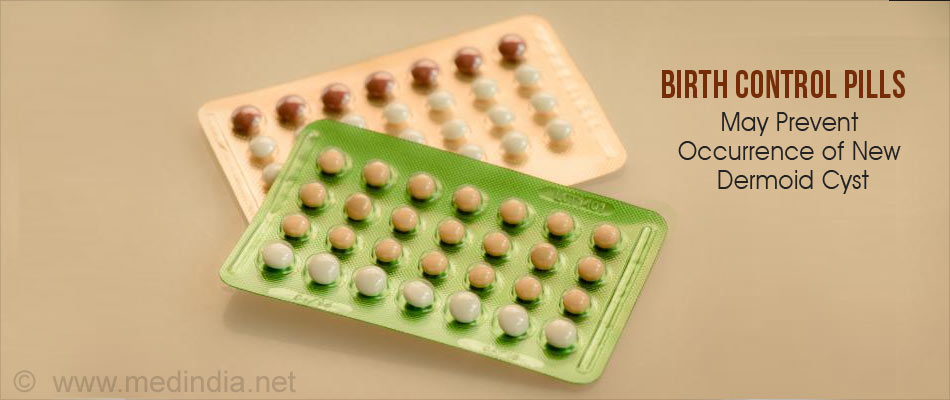
- Surgery may be required to remove the cyst if it's large; not looking like functional cyst; is growing or lasts through two to three menstrual cycles. If cysts cause pain, their removal may be recommended.
If a cystic mass is cancerous, total removal of ovaries may be recommended by your doctor. Surgery may also be recommended if cystic mass develops on ovaries post menopause.
How do you Prevent Dermoid Cyst?
Though there is no fixed method to prevent the occurrence of dermoid cysts. In cases of dermoid cysts in the ovaries, regular pelvic examinations may be needed. Also, a close watch should be kept if there is any change in your monthly cycle, that includes symptoms that accompany menstruation. Talk to your doctor about any concerns.
Health Tips
- Self-removal of facial cysts is not recommended as cysts will grow again if not completely removed. Also, chances of infection, bleeding and other complications are on the high if cysts are removed by self.
For Ovarian Dermoid Cysts:
- Avoid exposure to estrogen (most common cause of hormonal imbalance) and xenoestrogens by:
- Restricting soy foods
- Take DIM (diindolylmethane) supplements
- Stop using skin care products having mineral oil and parabens
- Don't take water from plastic bottles
- Avoid alcohol, wheat, caffeine and sugar
- Use natural progesterone cream to balance estrogen and progesterone levels, as this will help to reduce ovarian cysts and chances of recurrence in the future.
- Eat foods rich in omega-3essential fatty acids as they can control hormonal disturbances and also insulin resistance, linked with polycystic ovarian syndrome (PCOS).
- Take organic foods as far as you can.
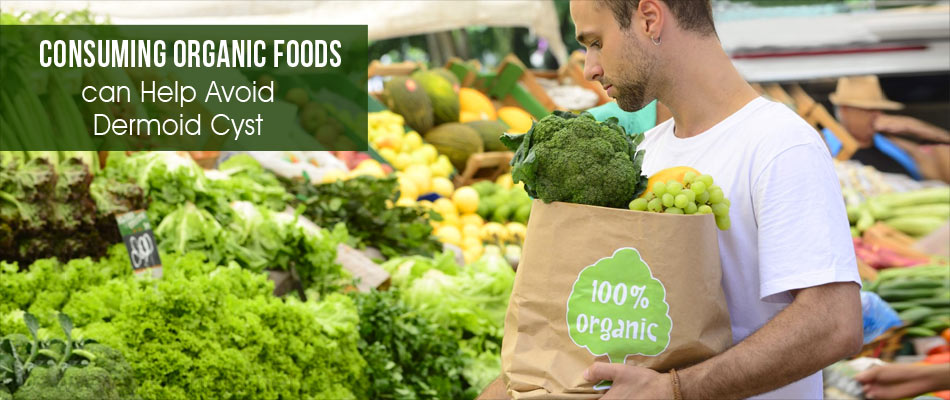
- Consume magnesium rich foods like almonds, bananas, broccoli, cashew nuts as these help reduce cramps occurring due to ovarian cysts.
- Take vitamin B supplement as it helps balance blood sugar and hormone levels.


